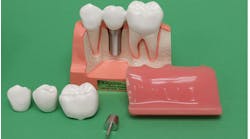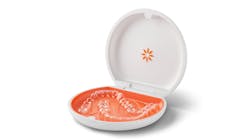I find that most aspects of dental office culture are not taught in dental school. In fact, it is those nonclinical considerations that tend to keep you awake at night. As a seasoned basketball coach and strategic business coach for more than 25 years, it is in my nature to look at teams and team culture from that perspective. I approach solutions to these concepts as a true coach, and I teach dentists leadership using the coaching model. It makes sense … if you say you have a team, then the leader of the team is called the coach. Once you understand how to coach others and learn what is needed to be successful, all those nonclinical aspects, such as office culture, become easier to manage.
The coaching model
The framework I use to teach leadership is easy to understand and makes use of the natural abilities you already have—education and encouragement of others. You’re already using these abilities daily with your patients. It comes naturally for you. Thinking about these skills in a different way allows you to use your abilities as a coach for your team.
More about office culture ... How to build and maintain a positive dental workplace culture
As the head coach, you need to prepare for practice and game time. Practice time is when you’re not seeing patients, and game time is when you are seeing patients. Think of the great coaches you admire. Whether on the NCAA level or pro, these coaches practice to be fully prepared for game time. This is the lens you need to use when looking at your team from a coaching perspective. How much time are you setting aside for practice time? Your schedule dictates your game time.
How to make your game plan work
Your office culture affects all those things that cause you stress from a nonclinical point of view. For some reason we tend to overcomplicate office culture. I like to simplify things, so I define culture as what is and is not acceptable when it comes to human behavior. Understanding and creating your office culture is the secret sauce to making your leadership game plan work in your practice.
To make sure everyone is on the same page, start with a behavior exercise. Meet as a team and draw a line down the middle of your whiteboard or on a large piece of paper. Title one side “acceptable behavior” and the other side “unacceptable behavior.” Designate someone to be the notetaker when your team starts sharing ideas.
It can be amazing to see what ends up listed on each side of the line. As your team really gets into this exercise, don’t be surprised if past conflict comes to the surface. Words such as gossip or keeping promises or accountability—all kinds of things may be mentioned. Be prepared for those great moments, since this is how you know your team is getting the most out of this exercise.
You may also be interested in ... No more "playing it safe": Invest in your dental business
It’s OK to ask your team what side of the line certain behaviors belong on. This is a great time for you to get things off your chest as well. Think back to when there was disagreement within the team, and use those words or phrases that come to your mind.
This exercise works best when everyone agrees on which side each behavior belongs. No one can say after this meeting that they didn’t understand or didn’t agree with the culture you are creating in your practice.
Before you end this behavior exercise, explain to your team that they all have equal freedom and accountability with one another to call someone out if their behavior violates the list of acceptable behaviors you all agreed upon. Each team member needs to know they have both the ability and the responsibility to gently remind an offender that their behavior is not OK. Until this list is created and agreed on, trust will be lacking among your team members. That’s why you must define your culture so you can begin to have team cohesion.
Creating an office culture
It’s important to understand this game-plan process is just the beginning of creating your office culture. So many things have happened recently: the Great Resignation, reset, quiet quitting, to name some. In fact, the stress of finding good team members is expected to continue. Becker’s has quoted data from McKinsey and Co. that by 2031 there could be more than 36,000 vacancies for jobs in dentistry.1 But you can proactively combat that through planning, communication, and organization. As the head coach of your dental practice, the more organized you are regarding your expectations, the greater the likelihood your team will remain with you.
In our industry, we are blessed to work with people who genuinely care about one another. Bringing like-minded team members together for a common goal is really what you’re going after. The easiest way to do that is to use the leadership coaching model. When your practice has worked hard to achieve an environment where everyone can anticipate how their day is going to flow, your team will know everyone will be held to the same level of accountability. If your office is a positive, fun place to work, your team will stay.
Strive for unity
By focusing on your culture as a team, everyone’s voice will be heard, and the team will agree as a unit. While this automatically brings people together, leading and influencing human behavior can still be daily struggles. As the head coach, use your assistant coach(es) to further your plan. If you have a large practice, you may need each department head to be an assistant coach. The purpose is not to build silos or boost egos; it’s just the opposite. The purpose of the assistant coaches is to help the head coach with the larger leadership game plan.
Another positive outcome of creating your office culture is that it helps avoid burnout. When expectations, roles and responsibilities, and culture are all written out, the team doesn’t have to guess what they are responsible for each day. Having a solid foundation to build on is critical to the success of your team and dental practice.
The Oral Health Workforce Research Center found that burnout was caused by a “chaotic work environment and lack of effective teamwork.”2 Your team needs to be able to anticipate each day and see consistent behaviors from their coach. In fact, one of the biggest responsibilities you have as the head coach is leading your team so that you bring clarity—not confusion. By taking the time to create your office culture, you will ensure that all the nonclinical aspects are easier to anticipate and handle effectively.
Editor's note: This article appeared in the January 2024 print edition of Dental Economics magazine. Dentists in North America are eligible for a complimentary print subscription. Sign up here.
References
- Portalatin A. The US could be short more than 36,000 dental workers by 2031. Becker’s Dental + DSO Review. Becker’s Healthcare. October 4, 2023. https://www.beckersdental.com/staffing-issues/42056-the-us-could-be-short-more-than-36-000-dental-workers-by-2031.html
- Surdu S, Langelier M, O’Malley E, Fernando T, Pang J, Romero A. Identifying strategies to improve oral health workforce resilience. Oral Health Workforce Research Center, Center for Health Workforce Studies, School of Public Health, SUNY Albany. September 2023. https://www.chwsny.org/wp-content/uploads/2023/09/OHWRC-Strategies-to-Improve-Oral-Health-Workforce-Resilence_2023.pdf
With more than 25 years of business experience, including being a seasoned basketball coach, Lynne Leggett, BS, FAADOM, understands that having employees doesn’t equal a team. She is founder and CEO of Victory Dental Management, author of You Can’t Coach Quit and The Coach’s Corner newsletter, and a frequent contributor to dental journals. She has a BS in business administration from Mary Washington College with a concentration in management, marketing, and prelaw. Contact her at [email protected].






